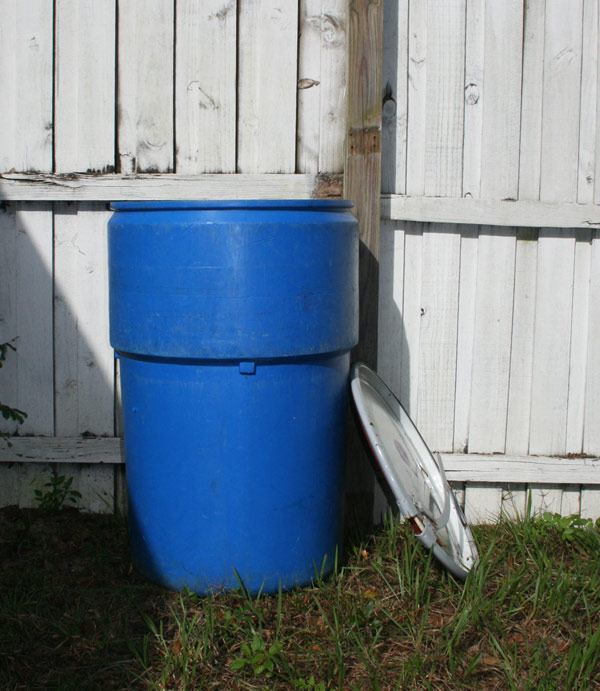Remember that old story of the natives teaching the Pilgrims to bury
fish beneath their corn plants? It works. That’s why “fish emulsion” or
“fish fertilizer” is still sold as a common organic fertilizer. Plants
love it – and you can make it yourself. This is a good thing, because
fish emulsion is really expensive.
As I posted previously, my friends Rick and Mart came over a few weeks ago for a major yard work day. Both of these guys are pretty hard-core plant geek/survivalist/homesteader types.
When they arrived, Rick said, “Hey… I brought you a little gift from the Caribbean market.” He then proceeded to haul two buckets of nice fresh fish guts and parts from the back of his truck.
I was thrilled. What thoughtful friends I have!
Once I had this bounty… it was time to make it into something amazing for my plants.
If you have access to fish waste, you can do the same thing I do. It’s easy and it smells incredible. Here’s how I’m doing it.
Step 1: Get A Big Barrel
After this particular project, you’re not going to want to use this barrel for anything else, so choose wisely. I got a great used 55-gallon drum with a top from the local feed store:
You want a lid for this thing to make sure animals stay out and that
none of the fish turn into undead zombie fish and escape in the night.
They’ll come in your windows and stuff, trashing your house and eating
your brains. Don’t let that happen.






6 comments
Fish emulsion is a must have for my garden and I'm ever so thankful they have it bottled up all nice and pretty at our local garden store. This is a wee-bit hardcore for me. :-) I bet your neighbors love you.
Oh yeah. I'm sure they love me. The folks on one side are bird watchers. Vultures are birds, right? On the other side, the fellow is a hunter/fisherman. The stench probably reminds him of the wharf.
You're welcome for the fish guts. Now I have to keep reminding myself to go there every Saturday to pick up a bucket or two.
How much better would you say the emulsion thing is to just burying them under ground in your hugelkulture beds?
I don't know that either method would be better – just a matter of usage.
Burying under a hugelkultur bed may still result in animals digging, unless you went good and deep. Or mixed in human waste. Animals apparently don't like that. On the other hand, it's a nice, non-smelly way of directly increasing the fertility of a patch of ground.
Getting the emulsion thing going also allows for quick fertilization of plants in need, i.e. transplants, sad citrus, drought-stricken bananas, etc.
Fish fertilizers are quite helpful fertilizer for growing plants. Most probably in fertilizer we have found different types of chemical ingredients that is quite harmful for plants; therefore professional gardeners are used to adopt fish fertilizers. A natural way for the growth of plants; in this above article we can get steps for how to make our own fish fertilizer.
How do you know when its ready to use? Do you let it sit for days, weeks, what?
Comments are closed.